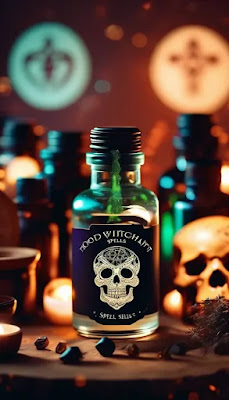At the heart of hoodoo is an embrace of the supernatural that aligns with gothic sensibilities, offering a labyrinth of shadowed corridors to explore. From the spectral imagery of crossroads magic to the haunting presence of graveyard dirt in rituals, hoodoo intersects with gothic aesthetics in fascinating ways. Its narratives of defiance and survival resonate deeply with the themes of darkness, mystery, and transformation that permeate alternative cultures. There are countless examples of practitioners turning to the dark, shadowed corners of the world for both protection and revenge. The use of herbs, roots, bones, and other seemingly mundane objects imbues them with supernatural qualities. A glass of water can become a love spell, while a bi-colored candle may hold the power to banish evil. These objects, transformed through ritual, resonate with the gothic imagination's attraction to the ordinary turned extraordinary, the everyday imbued with the uncanny.
In tracing the history of hoodoo, we uncover a tapestry of struggle and survival, a history forged in the shadows but full of vitality. For the enslaved Africans who brought their beliefs and practices to the Americas, hoodoo became a means of resistance. It was a way of reclaiming power in a world that sought to strip it away. It was a way to assert that even in the darkest of times, the light of one’s soul could not be extinguished. Hoodoo speaks to the resilience of those who refuse to be silenced by oppression, offering them a means of both survival and transformation
The very essence of hoodoo is steeped in a vivid portrayal of the unseen. The magic that flows through its practices is not always bright or benevolent but often operates in the hidden, the dark, and the eerie. Spells are cast with an eye toward protection, vengeance, and transformation; where the boundaries between life and death, the living and the spectral, are blurred in rituals as mysterious as the spirits themselves.
Consider the graveyards, those wonderful places where the boundary between the living and the dead is most easily breached. In hoodoo, graveyard dirt is a key ingredient in many magical rituals, used to conjure the spirits of the departed for assistance or to invoke the power of supernatural entities. The idea of using the soil of the dead to harness power from beyond the grave is at once eerie and empowering -- and it is often thought that this very element of fear is precisely what bestows the magic with its power. Spells such as the rabbit's foot spell are empowered by their ritual location in the graveyard.
In modern times, hoodoo continues to captivate those drawn to the dark and mysterious. It offers a glimpse into a world where magic and the macabre are not just subjects of folklore or fiction but lived realities. Through hoodoo, we are reminded of the power of darkness -- not just as a force of destruction, but as a force of creation and transformation. Whether we are seeking to understand the past or to engage with the supernatural today, hoodoo offers us a path into the unknown, a path that may be dark, but is never without its light.
